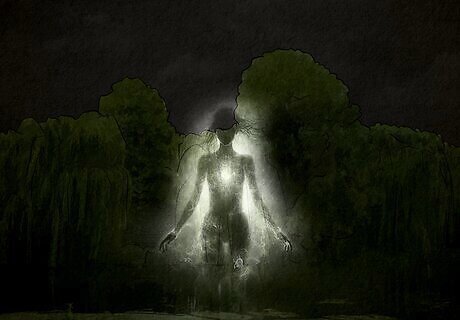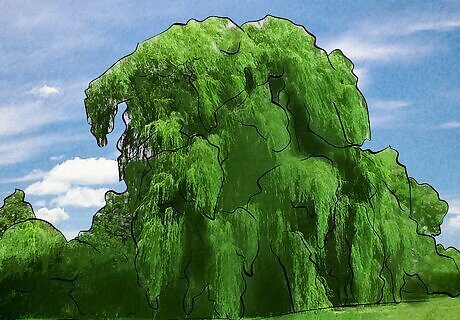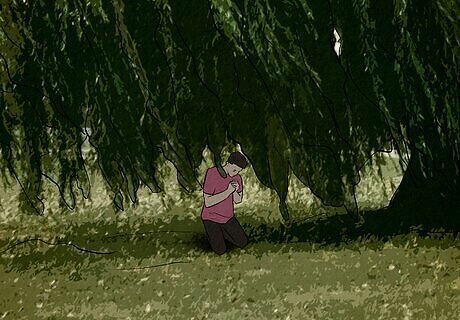
views
Spiritual Meanings of Willow Trees

Flexibility and adaptability The willow tree’s limbs are particularly limber and can bend and withstand the strongest of winds and bad weather without snapping. Therefore, many associate it with people’s abilities to overcome hardship and emotional struggles.

Good luck All around the world, willows are believed to bring luck and good fortune. Across cultures, people carry willow branches or twigs or tie them above the doorways of their houses to promote positivity and goodwill. These beliefs are common in parts of Europe, Asia, and North America. In Europe, and especially in Celtic beliefs, people would knock on the trunks of willows to bring good luck. This is where we get the phrase “knock on wood.”

Rebirth Willow trees have a long lifespan, and new trees can easily be rooted from cuttings. Because of this, they’re often associated with rebirth and transformation. Sometimes, they even symbolize immortality or fertility. Willows have also been associated with the moon, which also goes through phases and transforms throughout the month. This association comes from the tree’s love for water and the moon’s effect on the tides.

Grief and mourning Also known as weeping willows, these trees look like they’re crying when raindrops roll down their leaves. For this reason, many cultures associate them with death and mourning. Willows are often planted in graveyards and engraved on tombstones. This is not necessarily a negative connotation, however. Because willows are also associated with immortality, they often represent the endurance of love after death. Part of this association may come from the Bible. Psalms 137:1 states, “By the rivers of Babylon, there we sat down, yea, we wept when we remembered Zion. We hanged our harps upon the willows in the midst thereof.” In the 16th and 17th centuries, willows were also associated with the grief and heartbreak of scorned lovers.

Protection Willows may look dainty but their roots are strong, help prevent flooding, and have even been known to burst pipes. In some cultures, these trees are used to ward off evil spirits, and willow wood is thought to bring emotional and physical strength to those who wield it. Many Native American tribes tied willow branches to their boats to protect them from bad weather. They also kept branches in their homes to protect the Great Spirit. Similarly, people in ancient China carried willow branches and placed them in doorways to ward off evil spirits, and in England, people hung willow twigs on their homes to protect themselves from witches. Willow trees have many healing properties because their bark contains salicin, a chemical similar to aspirin. Willow bark was once used to treat colds and fevers, and people chewed twigs for pain relief. Because willows offered physical protection from ailments, this could lead people to believe willows could protect them spiritually, as well.

Wisdom Because of their long lifespan, many people think of willow trees as old and wise. Some may even see them as a source of spiritual guidance. This association is common in pop culture. For example, in Disney’s Pocahontas, Grandmother Willow offers the characters sage advice throughout the film.

Chastity Because they were historically associated with virgin goddesses like Artemis, Christians came to view willows as a symbol of chastity. Willow branches were sometimes used as substitutes for palm of Palm Sunday if the latter was not available, and they may have been used to decorate churches on Easter, as well. In Exposition on Psalm 136, Saint Augustine compares the unfruitful willows of Babylon to barren souls uninterested in spiritual value. They represented chastity for Saint Gregory the Great. In Morals on the Book of Job, he states, “For the children of Holy Church spring up as willows among the grass, when amidst the withering life of carnal men, they last on in manifold numbers and perpetual greenness of mind.”
Willow Tree Mythology and Folklore

The willow appears in a 15th century English Christmas carol. The Watersons song “The Bitter Withy” is likely based on apocryphal tales of Christ’s childhood, in which he builds a bridge of sunbeams and forms pools of water on the banks of the River Jordan to show his powers to the other children, and he ends up harming them in the process. When Mary finds out, she delivers 3 blows with a handful of willow twigs. In the carol’s final verse, Jesus says, “Oh, the withy, it shall be the very first tree that perishes at heart!” This is an explanation for the crack-willow’s tendency to split and collapse under its own weight.

In Greek mythology, willows are magical and holy. Willows appear in several Greek myths and are often associated with witchcraft and magic. The sorceress Hecate was the goddess of the moon and the willow tree, and priestesses of the goddess Helice used willow in their magic. Orpheus took willow branches to the Underworld for protection, as the willow was holy to poets. Willows are also connected to music in Greek mythology because the god Apollo gifted Orpheus a harp made of willow wood.

The willow is part of the Celtic Zodiac. The Celtic Zodiac comes from the Druids’ knowledge of earth cycles and their connection with trees. In this astrology system, willows represent instinct and intuition, and people born under the sign (April 15 - May 12) are often in touch with their psychic abilities. They’re realistic and knowledgeable about a wide variety of topics. The willow sign is ruled by the 5th lunar month, its ruling planet is the moon, and its ruling element is water. In Celtic mythology, willows served as borders between the physical and spiritual planes. These borders were highly sacred and spiritual, which is why those born under the willow sign are believed to be intuitive and psychic.

The Celts also associated willows with the world’s origin. Another Celtic myth states that the universe was hatched from 2 crimson serpent eggs, which contained the sun and the Earth. The eggs were hidden in the branches of a willow tree. This may also be the origin of Easter egg hunts, as Christians heard the legend and adapted it to their own religion.

Many Chinese folktales involve willow branches. In the Clear and Bright period (when the weather warms up), ghosts can come into the living world, so Buddhists believe willow branches will keep them away. In another tale, young women wear willow branches during this period to avoid growing old prematurely. Another version states that if someone doesn’t wear a willow, they will be reincarnated into a yellow dog.




















Comments
0 comment